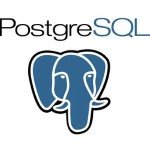Databases
-

Handling PostgreSQL TimeScale Hypertable Column Changes Efficiently
Driving home from a long day of work, I see the beautiful sky and so to not miss the beauty,…
Read More » -

Stashing Previously Set psql Variables
The command-line based “PostgreSQL interactive terminal” known as psql is handy for manipulating and accessing data in a PostgreSQL database.…
Read More » -

PostgreSQL’s psql \set versus SET
It is easy for someone who is new to PostgreSQL and who uses PostgreSQL’s terminal editor psql to confuse the…
Read More » -

Revealing the Queries Behind psql’s Backslash Commands
PostgreSQL‘s psql interactive terminal tool provides several useful “backslash list commands” such as \d (lists “relations” such as tables, views,…
Read More » -

PostgreSQL Database Tutorial
Course Overview In this post, we feature a comprehensive PostgreSQL Database Tutorial. PostgreSQL, often simply Postgres, is an object-relational database…
Read More » -

Connect to PostgreSQL using PHP
This article is part of our Academy Course titled PostgreSQL Database Tutorial. In this course, we provide a compilation of…
Read More » -

PostgreSQL backup, restore, and migration Tutorial
This article is part of our Academy Course titled PostgreSQL Database Tutorial. In this course, we provide a compilation of…
Read More » -

PostgreSQL Hot-Standby Database Replication Tutorial
This article is part of our Academy Course titled PostgreSQL Database Tutorial. In this course, we provide a compilation of…
Read More » -

Common Table Expressions in PostgreSQL
This article is part of our Academy Course titled PostgreSQL Database Tutorial. In this course, we provide a compilation of…
Read More »
- 1
- 2

